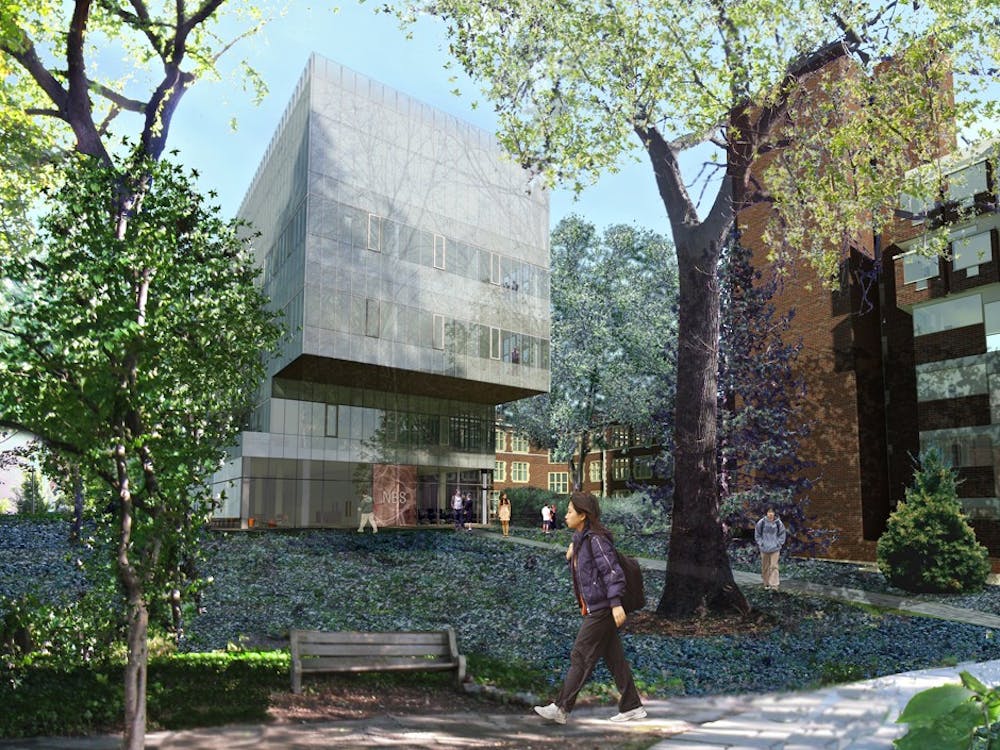
Plans for the Neural and Behavioral Sciences building will be voted on at the Board of Trustees meeting today. The building will serve as a ‘hub’ for psychology, biology and biological basis of behavior students and professors. (Courtesy of the Smith Group Architects)
Students studying psychology, biology and biological basis of behavior may soon find a new home on campus.
Plans for the Neural and Behavioral Sciences building were presented in a resolution at the Board of Trustees’ Budget and Finance Committee meeting on Thursday. The full Board of Trustees will vote on whether to approve the project to the next stage of design today.
The building, which will be situated between the Leidy Laboratories of Biology and the Carolyn Lynch Laboratory near 38th and University Avenue, will serve as “a hub for undergraduate education for life sciences at Penn,” School of Arts and Sciences Dean Rebecca Bushnell said.
The new facility, described by SAS Vice Dean Ramin Sedehi as “the Huntsman Hall for life science students,” will house state-of-the-art laboratory classrooms, an auditorium, advising and study spaces, as well as a cafe.
The building site is surrounded by facilities of the Perelman School of Medicine, the School of Veterinary Medicine, the Penn Dental School and the School of Nursing. It will mark the entrance to campus from South Philadelphia.
The building’s green design and materials allows it to be on target for silver LEED certification. Its design has already been awarded two prestigious architectural honors, including the 2009 Unbuilt Award from the Washington D.C. chapter of the American Institute of Architects.
While Psychology Department buildings are currently scattered throughout campus, the NBS building will bring them together into one space and next to the other life sciences, Bushnell said.
Twenty-five percent of undergraduate students major in biology, psychology or BBB, according to Bushnell.
The open design of the building will create more opportunities for students to “bump into each other,” Sedehi said, creating “something greater than the sum of its parts.”
Psychology professor David Brainard believes the building will have a large impact on the Psychology Department and the University.
“As they say, geography is density, and by having these three groups together, we expect that new synergies between the teaching and research of these three groups will emerge,” he wrote in an email.
He also hopes the building will spark new research ideas. “The promise is that serendipitous conversations, common research seminars and increased connections will produce intellectual sparks that in turn generate new ideas for research,” he explained.
While Penn’s priority is to bring current faculty together in the collaborative space, Bushnell added the building will also be useful in attracting new faculty to Penn, as “scientists really care about space.”
Sedehi explained that buildings on campus develop over five stages. While the NBS building has passed the feasibility and schematic design stages, the project will now approach the design development stage, where details such as occupancy numbers and furniture placement will be determined.
Administrators hope the building will move into the next stages of design and construction, pending further approval and fundraising capital.
The majority of the funding for the project came from the Making History campaign, which reached its goal of $3.5 billion in September. The building has been a core priority of the campaign, Bushnell said.
College sophomore Julio Albarracin, who is majoring in biology, believes that the new facility will be very beneficial to students in the life sciences. He said the current facilities “are not conducive to learning.”
“The classrooms aren’t set up for the amount of people interested in the sciences these days,” he said. He added that the Leidy Labs have poor circulation. “When we were doing dissections, the smells would linger.”
Without study spaces and eating venues, “that whole area is pretty dead right now,” he said.
The Daily Pennsylvanian is an independent, student-run newspaper. Please consider making a donation to support the coverage that shapes the University. Your generosity ensures a future of strong journalism at Penn.
DonatePlease note All comments are eligible for publication in The Daily Pennsylvanian.





